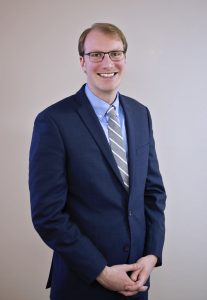The following article was contributed by Dr. Matthew Veerecke, Superintendent of the Diocese of Dallas.
When I was transitioning from a school president to the Superintendent of the Diocese of Dallas, the steepest element of my learning curve was the difference in the staffing model. I went from an administrative team of essentially twenty professionals with specific and defined roles at a school of 850 to roughly seven full-time positions, three of them purely support roles, for a diocese of 15,000 students. It was apparent from day one that my approach to school improvement and support would have to change dramatically – we simply did not have the capacity to achieve operational oversight in a diocese of approximately forty schools.
The Superintendent’s office must focus solely on goals, leaving program design to principals and implementation to teachers said Dr. Matthew Veerecke, Superintendent of the Diocese of Dallas.
 At the heart of our process are two concepts: first, for system level change to occur, we must create a culture and a context that allows for growth; and second, our mechanisms for change must be broad enough to allow for individual adaptation at the local level. Put simply, it means that the Superintendent’s office must focus solely on goals, leaving program design to principals and implementation to teachers. Especially for successful administrators, this approach can appear to be counter-intuitive. I found that it was often easier for me to simply hand a principal a fully-formed program, but I also learned very quickly that approach was not sustainable. Without self-development or an understanding of the nuances involved in program development – nuances that could not be shared in a simple document – these programs were quickly forgotten.
At the heart of our process are two concepts: first, for system level change to occur, we must create a culture and a context that allows for growth; and second, our mechanisms for change must be broad enough to allow for individual adaptation at the local level. Put simply, it means that the Superintendent’s office must focus solely on goals, leaving program design to principals and implementation to teachers. Especially for successful administrators, this approach can appear to be counter-intuitive. I found that it was often easier for me to simply hand a principal a fully-formed program, but I also learned very quickly that approach was not sustainable. Without self-development or an understanding of the nuances involved in program development – nuances that could not be shared in a simple document – these programs were quickly forgotten.
Our session at the Catholic Leadership Summit in Tempe, AZ will therefore focus on the how to create the conditions necessary to build a culture where these types of conversations can occur, and how to evaluate whether or not the current approach of the superintendent’s office hinders or helps that goal. In addition, we will cover direct operational approaches that allow principals to better translate goals into action, and action into change, within their own schools.
